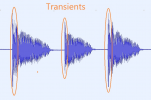Hello everyone,
It is often heard how some expensive interface preamps like Apollo sound better than, let's say Focusrite Scarlett for example. And this is somewhat natural, the price difference is there, both belong to different price segments, so I am not saying that this is not true, I do not know. Maybe it is.
However whenever I ask why is that, and what makes the difference if we know that those preamps are 'clean', so no harmonic distortion all the way down to -90db or more, the frequency curve is practically identical, so what else can give a difference in sound quality, or better say what else can give a different sound character, well then all the hell breaks loose and people start yelling and raging about how stupid the question is.
So let's try again, hoping that this community is less religious and more scientific, what can make the difference other than frequency response and harmonic distortion in an audio interface preamp?
Is there anything that can make the transients different?
Are there some 'magical' things that can not be measured?
It is often heard how some expensive interface preamps like Apollo sound better than, let's say Focusrite Scarlett for example. And this is somewhat natural, the price difference is there, both belong to different price segments, so I am not saying that this is not true, I do not know. Maybe it is.
However whenever I ask why is that, and what makes the difference if we know that those preamps are 'clean', so no harmonic distortion all the way down to -90db or more, the frequency curve is practically identical, so what else can give a difference in sound quality, or better say what else can give a different sound character, well then all the hell breaks loose and people start yelling and raging about how stupid the question is.
So let's try again, hoping that this community is less religious and more scientific, what can make the difference other than frequency response and harmonic distortion in an audio interface preamp?
Is there anything that can make the transients different?
Are there some 'magical' things that can not be measured?


